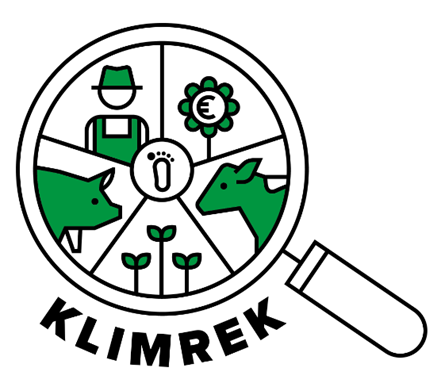Introduction
Klimrek is a VLAIO agricultural project that started in September 2019. In this project, ILVO, Boerenbond and VITO work together for four years on a climate trajectory for dairy farmers, pig farmers and arable farmers with potatoes in their cultivation plan. To this end, a climate consultant goes 'on the road' with a targeted climate scan and climate course to support the farmers in switching to a more climate-friendly and climate-protective operational management, whereby the convenience for the farmer and the economic feasibility are also taken into account.
The climate scan is a company-specific screening tool that makes clear where the climate impact of the company lies. A climate scan per sector is developed based on a life cycle analysis (LCA) with which the climate consultant visits the farmer to collect the necessary data. Subsequently, the consultant visits the farmer to propose and discuss measures with calculated scenarios. At the same time, a cost-benefit analysis is made to estimate the economic feasibility.
In the climate course, the climate consultant, together with the farmer, looks for the climate measures that make the farm the most climate friendly and/or climate proof. Attention is also paid to the practical feasibility. The consultant provides further support and guidance in applying the climate measures on the farm.
The aim is to support and encourage farmers to take measures. The farmer is given, on a voluntary basis, a detailed insight into the climate and environmental impact of his/her farm through a climate scan conducted by a climate consultant. This scan is linked to a company-specific improvement path, in which the consultant will propose climate measures tailored to the company. Where possible, the consultant makes scenario analyses that give the farmer an idea in advance of the potential ecological and economic effect of each measure.
The consultants of dairy companies are already using the Klimrek scanning section to carbon footprint their dairy farms. At the moment, this is also a matter of voluntary participation and there are no compensations attached to the outcome of the scan.
Description of the innovation
Beef | Parameters | Time needed | Complexity | Complete by | Cost |
✗ | Tier 2 (IPCC 2019) |
|
| Consultant | It will be incorporated into Kratos, an advisory body of the Flemish government for agriculture |
What makes this tool different in comparison with other tools?
Within this tool, different CH4 reducing strategies are also included.
Enteric fermentation
Input parameters are based on Tier 2 (IPCC 2019).
To calculate enteric fermentation, different animal-related parameters are included: annual average number of animals present, annual weight per animal category, number of animals bought and sold, grazing hours per year per animal category, rotation per animal category (DE%), gestation%, and milk production per animal.
In addition, reduction of enteric CH4 emissions when different feeding strategies are applied, are taken into account; extruded/expanded linseed, brewers grains-rapeseed meal to replace soybean meal, nitrate or rapeseed fats (in accordance to the Covenant Enteric Emissions from Cattle, in Flanders).
The input needed to calculate the enteric emissions is pretty detailed. This is necessary, as this has a high impact on the Carbon footprint and is highly sensitive.
Manure management
Input parameters: Emissions of CH4 (IPCC 2019, Tier 2 for Flemish climate conditions) direct N2O (IPCC 2019, Tier 2 with Flemish excretion numbers), NH3 (EMAV), NOx (EMEP), NO3 (IPCC 2019).
As manure is also a big contributor to GHG emissions, several parameters are taken in to account: gross energy intake and DE% (digestible energy) of the ration per animal category, % of solid manure and slurry per animal category, grazing hours per animal category per year, and storage system per manure type (solid/slurry, dairy cows/young stock). In the latter, the tool also looks at the amount of separated manure and disposed manure. In addition, per system two consecutive storage types can be defined (storage type, type of cover, additive, retention time).
C sequestration
In the KLIMREK tool, this part is still under development. For now, the crop rotation, soil texture and SOC% per rotation, and fertilisation per crop are taken into account.
The C-balance is calculated from the C-inputs, the effective organic carbon values (= the amount of freshly applied carbon that remains in the soil after one year) and the carbon degradation via mineralisation of soil organic matter.
Impact on farm performance
Socio-economic resilience: Within the project, the tool is free to use (via an advisor). In time, Klimrek will be incorporated into Kratos and farmers will be able to enter into a Klimrek project through their Kratos portfolio.
Animal health and welfare: AH&W are not included in this tool
Production efficiency and meat quality: PE&MQ are not included in this tool, only parameters related to dairy cattle
Environmental sustainability: Together with the consultant, tailor-made climate measures are proposed.

